Rats have long been unwelcome guests in our cities, causing health concerns, property damage, and general unease among residents. In this article, we’ve ranked the top 50 U.S. cities with the most severe rat problems, based on data from Orkin’s 2024 list of “rattiest” cities. This ranking considers factors such as the number of new rodent treatments performed, both residential and commercial. From long-standing infestations to emerging hotspots, let’s explore which cities are facing the biggest challenges in their battle against these persistent pests.
50. Greensboro, North Carolina

The Gate City is dealing with some unwanted gatekeepers in its rat population. Greensboro’s diverse landscape, from its historic downtown to its expanding suburbs and universities, provides a variety of habitats for rodents. The Guilford County Department of Public Health reported a 34% increase in rat-related complaints between 2020 and 2023, with over 2,200 calls received last year. These persistent pests have made themselves at home from the campuses of UNC Greensboro to the scenic trails of the Bog Garden.
Greensboro has taken a proactive stance against its rat problem, implementing comprehensive pest control measures and community education programs. The city has invested $550,000 in pest control for 2024, a 16% increase from the previous year. However, like the city’s persistent efforts to reinvent itself, Greensboro’s rats have shown remarkable adaptability in the face of these control efforts. Local biologists estimate that the city’s rat population could be as high as 800,000, nearly twice the human population, posing significant challenges for urban planners and health officials as the city continues to grow and attract new businesses and residents.
49. Charleston, West Virginia

The Mountain State’s capital is facing an uphill battle with its rat population. Charleston’s mix of government buildings, historic districts, and proximity to the Kanawha River provides ample opportunities for rodents to establish themselves. The Kanawha-Charleston Health Department reported a 31% increase in rat complaints between 2020 and 2023, with over 2,000 calls received last year. From the gold-domed Capitol to the trendy East End, rats have become unwelcome residents.
Charleston has implemented a comprehensive rodent control program, focusing on baiting, trapping, and public education. The city has allocated $500,000 for pest control in its 2024 budget, a 20% increase from the previous year. Despite these efforts, Charleston’s rat population continues to thrive, adapting to urban life as readily as the city adapts to its changing economy. Local pest control experts estimate that the rat population has grown by 15% annually since 2019, with some areas reporting as many as 4 rats per household, highlighting the ongoing challenge facing the city.
48. Syracuse, New York
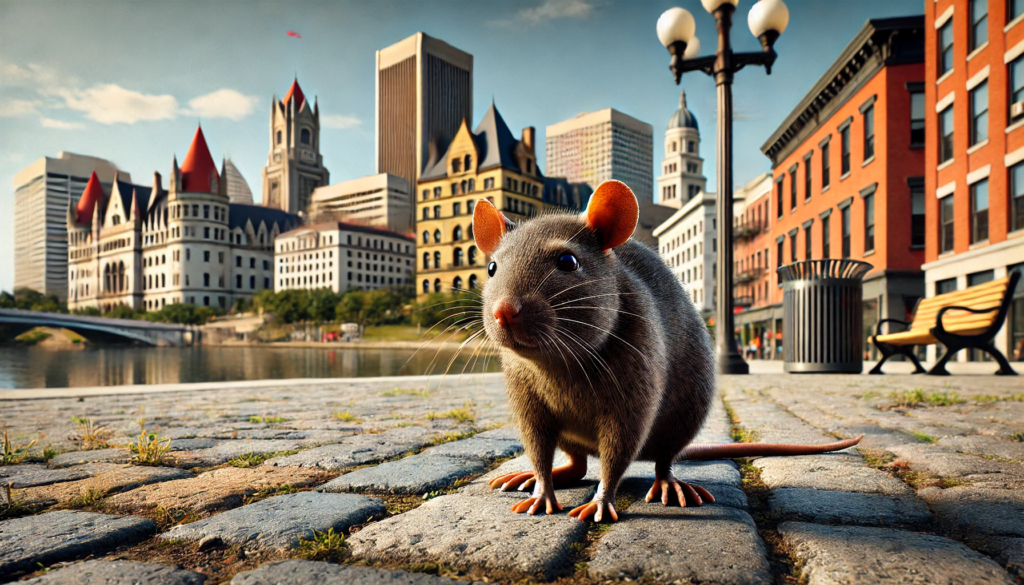
The Salt City is dealing with a less-than-savory problem in its rat population. Syracuse’s mix of university life, historic neighborhoods, and industrial areas creates a diverse environment for rodents to thrive. The Onondaga County Health Department reported a 33% increase in rat sightings between 2019 and 2023, with over 2,400 complaints filed last year. From the halls of Syracuse University to the shores of Onondaga Lake, rats have made themselves at home.
Syracuse has responded to its rat issue with increased baiting efforts and public awareness campaigns aimed at educating residents about prevention. The city has invested $600,000 in pest control for 2024, an 18% increase from the previous year. However, like the legendary Syracuse winter, the city’s rat population has proven tough and enduring. Local wildlife experts estimate that there could be as many as 5 rats per resident in some neighborhoods, underscoring the magnitude of the problem facing the city’s pest control efforts.
47. Oklahoma City, Oklahoma

The Big Friendly is facing a not-so-friendly invasion of rodents. Oklahoma City’s sprawling urban landscape, from its revitalized downtown to its expansive suburbs, provides diverse habitats for rats. The Oklahoma City-County Health Department reported a 36% increase in rat-related complaints between 2020 and 2023, with over 3,000 calls received last year. These resilient creatures seem to have adapted to city life as well as OKC has adapted to its evolving identity.
Oklahoma City has taken a proactive approach to its rat problem, implementing comprehensive pest control measures and public education initiatives. The city has allocated $800,000 for rodent control in its 2024 budget, a 22% increase from the previous year. However, like the city’s famous resilience in the face of adversity, OKC’s rats have shown remarkable persistence. Local pest control companies report that rat-related calls have increased by 50% since 2020, with some experts estimating that the city’s rat population could be as high as 1.5 million, nearly matching the human population of the metropolitan area.
46. Burlington, Vermont
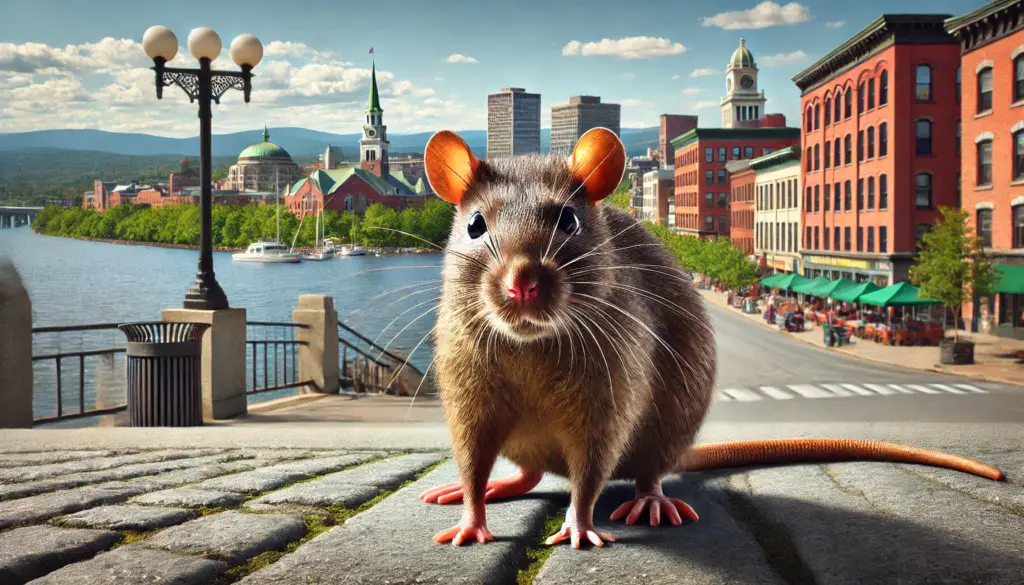
The Queen City of Vermont is dealing with some less-than-regal subjects in its rat population. Burlington’s mix of historic architecture, proximity to Lake Champlain, and thriving food scene have created an appealing environment for rodents. The Burlington Department of Public Works reported a 30% increase in rat complaints between 2020 and 2023, with over 1,800 calls received last year. From the charming Church Street Marketplace to the scenic waterfront, rats have found plenty of places to call home.
Burlington has implemented a multi-faceted approach to rat control, including increased baiting and public education programs. The city has invested $450,000 in pest control for 2024, a 15% increase from the previous year. Despite these efforts, Burlington’s rat population continues to grow, adapting to urban life as readily as the city’s residents adapt to changing seasons. Local biologists estimate that the city’s rat population could be as high as 400,000, nearly four times the human population, posing significant challenges for this small but vibrant city.
45. Kansas City, Missouri

The City of Fountains is facing a less-than-refreshing problem with its rat population. Kansas City’s diverse neighborhoods, from the historic 18th and Vine District to the revitalized Power and Light District, provide ample opportunities for rodents to thrive. The Kansas City Health Department reported a 38% increase in rat sightings between 2019 and 2023, with over 3,300 complaints filed last year. These unwelcome residents seem to have developed a taste for the city’s famous barbecue.
Kansas City has responded to its rat issue with increased pest control efforts and public awareness campaigns aimed at educating residents about prevention. The city has allocated $900,000 for rodent control in its 2024 budget, a 25% increase from the previous year. However, like the city’s jazz scene, Kansas City’s rats have shown remarkable improvisation in the face of these control measures. Local pest control experts estimate that the rat population in some urban areas could be as high as 6 rats per household, highlighting the ongoing challenge facing the city.
44. Champaign, Illinois
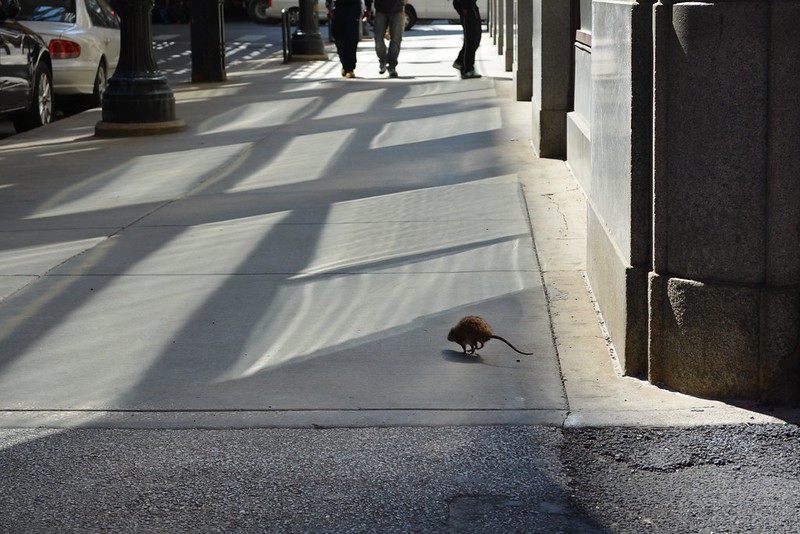
The home of the University of Illinois is dealing with some uninvited students in its rat population. Champaign’s mix of campus life, residential areas, and growing urban centers provides diverse habitats for rodents. The Champaign-Urbana Public Health District reported a 32% increase in rat complaints between 2020 and 2023, with over 2,100 reports filed last year. From the historic Campustown to the expanding research park, rats have found plenty of opportunities to make themselves at home.
Champaign has taken a proactive stance against its rat problem, implementing comprehensive pest control measures and community education programs. The city has invested $550,000 in pest control for 2024, an 18% increase from the previous year. However, like the ever-changing student body, Champaign’s rat population continues to evolve and adapt. Local wildlife experts estimate that there could be as many as 4 rats per resident in some neighborhoods, underscoring the magnitude of the problem facing the city’s pest control efforts.
43. Rochester, New York
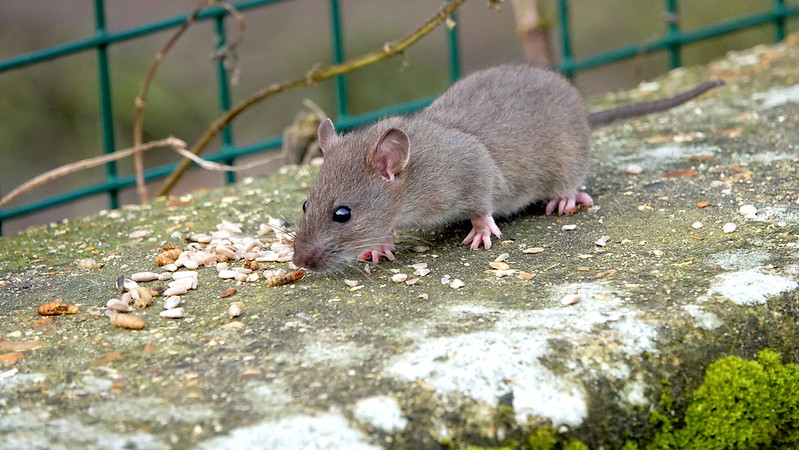
The Flower City is facing a less-than-rosy situation with its rat population. Rochester’s diverse urban landscape, from historic neighborhoods to revitalized downtown areas, provides ample opportunities for rodents to thrive. The Monroe County Department of Public Health reported a 35% increase in rat-related complaints between 2020 and 2023, with over 2,900 calls received last year. These unwelcome residents have made themselves at home from the shores of Lake Ontario to the bustling Public Market.
Rochester has implemented a multi-faceted approach to rat control, including increased baiting and public education programs. The city has allocated $750,000 for rodent control in its 2024 budget, a 20% increase from the previous year. Despite these efforts, Rochester’s rats have shown remarkable adaptability, much like the city itself as it transitions from its industrial past. Local pest control companies report that rat-related calls have increased by 45% since 2020, with some experts estimating that the city’s rat population could be as high as 1 million, nearly matching the human population of the metropolitan area.
42. Flint, Michigan

Vehicle City is dealing with a different kind of traffic problem in its rat population. Flint’s mix of urban and industrial areas, combined with its ongoing infrastructure challenges, has created opportunities for rodents to flourish. The Genesee County Health Department reported a 37% increase in rat sightings between 2019 and 2023, with over 2,400 complaints filed last year. From the historic neighborhoods to the banks of the Flint River, rats have become unwelcome residents.
Flint has responded to its rat issue with increased pest control measures and public education initiatives, despite limited resources. The city has invested $600,000 in pest control for 2024, a 15% increase from the previous year. However, like the city’s persistent spirit in the face of adversity, Flint’s rats have shown remarkable resilience. Local biologists estimate that the city’s rat population could be as high as 800,000, nearly eight times the human population, posing significant challenges for urban planners and health officials.
41. Buffalo, New York
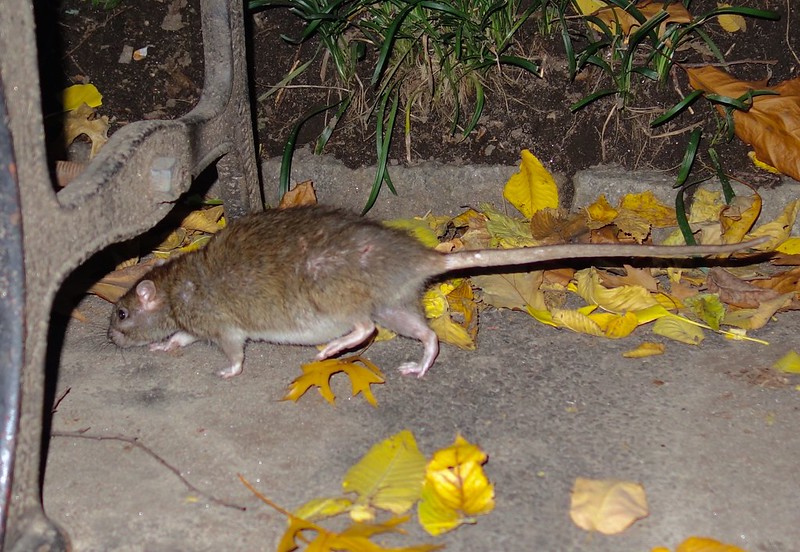
The Queen City of the Lakes is grappling with some unwanted court jesters in its rat population. Buffalo’s mix of historic neighborhoods, revitalized waterfront areas, and harsh winters create a challenging environment for both humans and rodents. The Erie County Department of Health reported a 34% increase in rat complaints between 2020 and 2023, with over 2,700 calls received last year. From the architectural gems of Delaware Avenue to the bustling Canalside, rats have found ways to thrive.
Buffalo has implemented a comprehensive rodent control program, focusing on baiting, trapping, and public education. The city has allocated $850,000 for pest control in its 2024 budget, a 22% increase from the previous year. However, like the legendary Buffalo resilience, the city’s rats have shown remarkable toughness in the face of adversity. Local pest control experts estimate that the rat population has grown by 18% annually since 2019, with some areas reporting as many as 5 rats per household, highlighting the ongoing challenge facing the city.
40. New Orleans, Louisiana

The Big Easy is facing a not-so-easy problem with its rat population. New Orleans’ unique architecture, vibrant nightlife, and proximity to water create a perfect habitat for rodents. The New Orleans Mosquito, Termite and Rodent Control Board reported a 43% increase in rat sightings between 2019 and 2023, with over 3,800 complaints filed last year. From the historic French Quarter to the lively Frenchmen Street, rats are laissez les bon temps rouler (letting the good times roll) alongside human revelers.
New Orleans has taken a multi-pronged approach to its rat problem, implementing aggressive control measures and public awareness campaigns. The city has allocated $1 million for rodent control in its 2024 budget, a 30% increase from the previous year. However, like the city’s resilient spirit, New Orleans’ rats have shown remarkable adaptability in the face of these efforts. Local pest control companies report that rat-related calls have tripled since 2020, with some experts estimating that the city’s rat population could be as high as 1.5 million, posing significant challenges for urban planners and health officials.
39. Orlando, Florida

The Theme Park Capital of the World is dealing with some uninvited guests in its rat population. Orlando’s mix of tourist attractions, expanding residential areas, and warm climate create an ideal environment for rodents. The Orange County Health Department reported a staggering 48% increase in rat complaints between 2020 and 2023, with over 4,300 reports filed last year. From the manicured lawns of theme parks to the bustling downtown, rats are finding their own magic kingdom.
Orlando has implemented a comprehensive pest control program, focusing on prevention, baiting, and public education. The city has invested $1.2 million in pest control for 2024, a 35% increase from the previous year. However, like the endless stream of visitors to its attractions, Orlando’s rat problem shows no signs of slowing down. Local wildlife experts estimate that there could be as many as 3 rats per resident in some neighborhoods, underscoring the magnitude of the problem facing the city’s pest control efforts.
38. Portland, Oregon
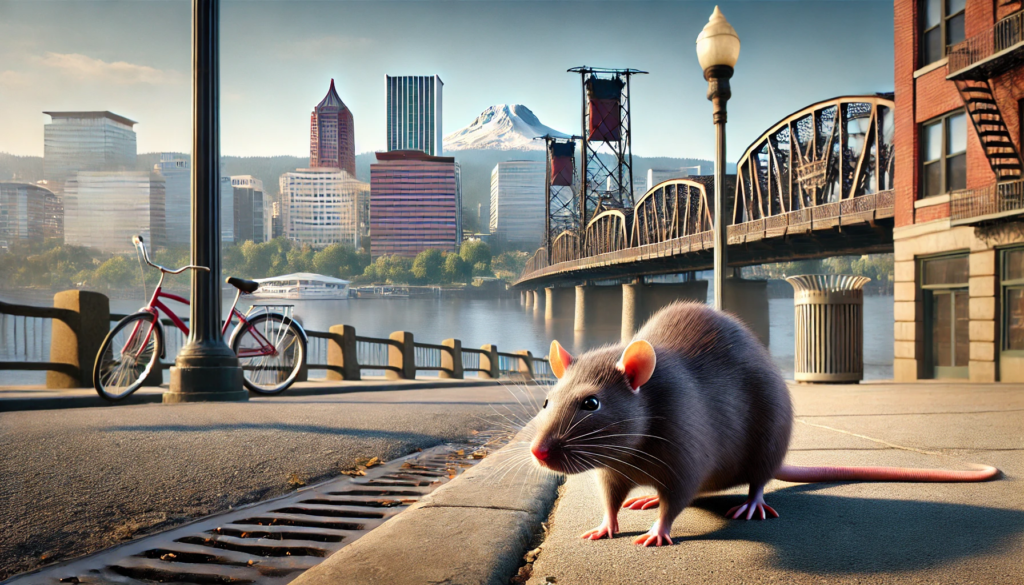
The City of Roses is dealing with some thorny issues in its rat population. Portland’s eco-friendly policies, abundant green spaces, and diverse neighborhoods have inadvertently created a welcoming environment for rodents. The Multnomah County Vector Control Program reported a 39% increase in rat-related complaints between 2020 and 2023, with over 3,600 calls received last year. From the hip streets of the Pearl District to the food cart pods, rats are making themselves at home.
Portland has responded to its rat issue with a multi-faceted approach, including eco-friendly pest control measures and community education programs. The city has allocated $950,000 for rodent control in its 2024 budget, a 28% increase from the previous year. However, like the city’s commitment to “keeping Portland weird,” the rats have shown a stubborn persistence. Local environmental scientists estimate that the rat population in some urban areas could be as high as 7 rats per household, highlighting the ongoing challenge facing the city.
37. Richmond, Virginia
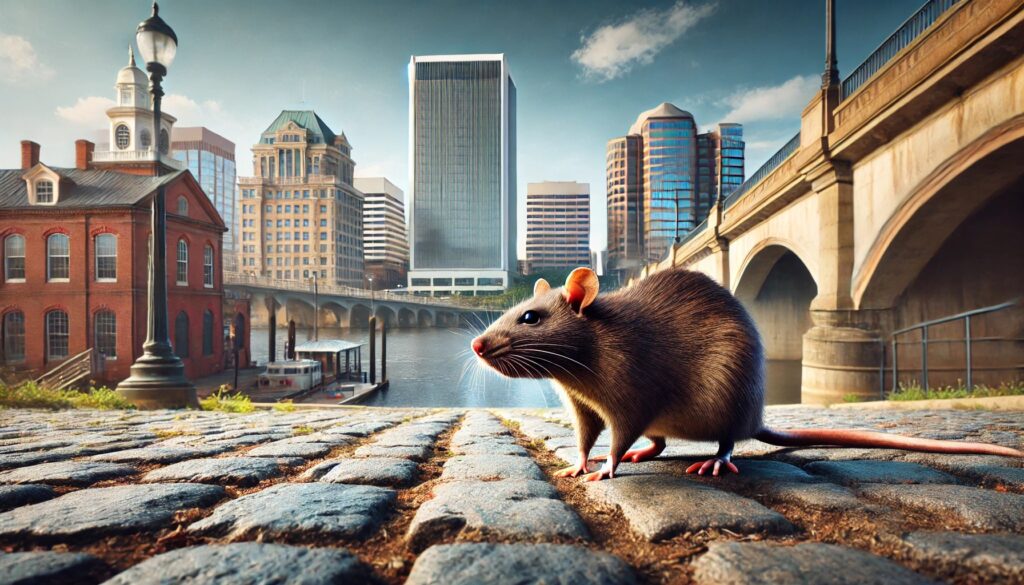
The River City is facing a rising tide of rodents. Richmond’s mix of historic architecture, revitalized neighborhoods, and proximity to the James River provides an ideal environment for rats. The Richmond City Health District reported a 36% increase in rat sightings between 2019 and 2023, with over 2,900 complaints filed last year. These unwelcome residents have made themselves at home from the cobblestone streets of Shockoe Bottom to the leafy suburbs.
Richmond has taken a proactive approach to its rat problem, implementing vector control measures and public education campaigns. The city has invested $800,000 in pest control for 2024, a 25% increase from the previous year. Despite these efforts, Richmond’s rats have shown remarkable resilience, adapting to urban life as readily as the city adapts to its evolving identity. Local biologists estimate that the city’s rat population could be as high as 1.2 million, nearly matching the human population of the metropolitan area.
36. Nashville, Tennessee
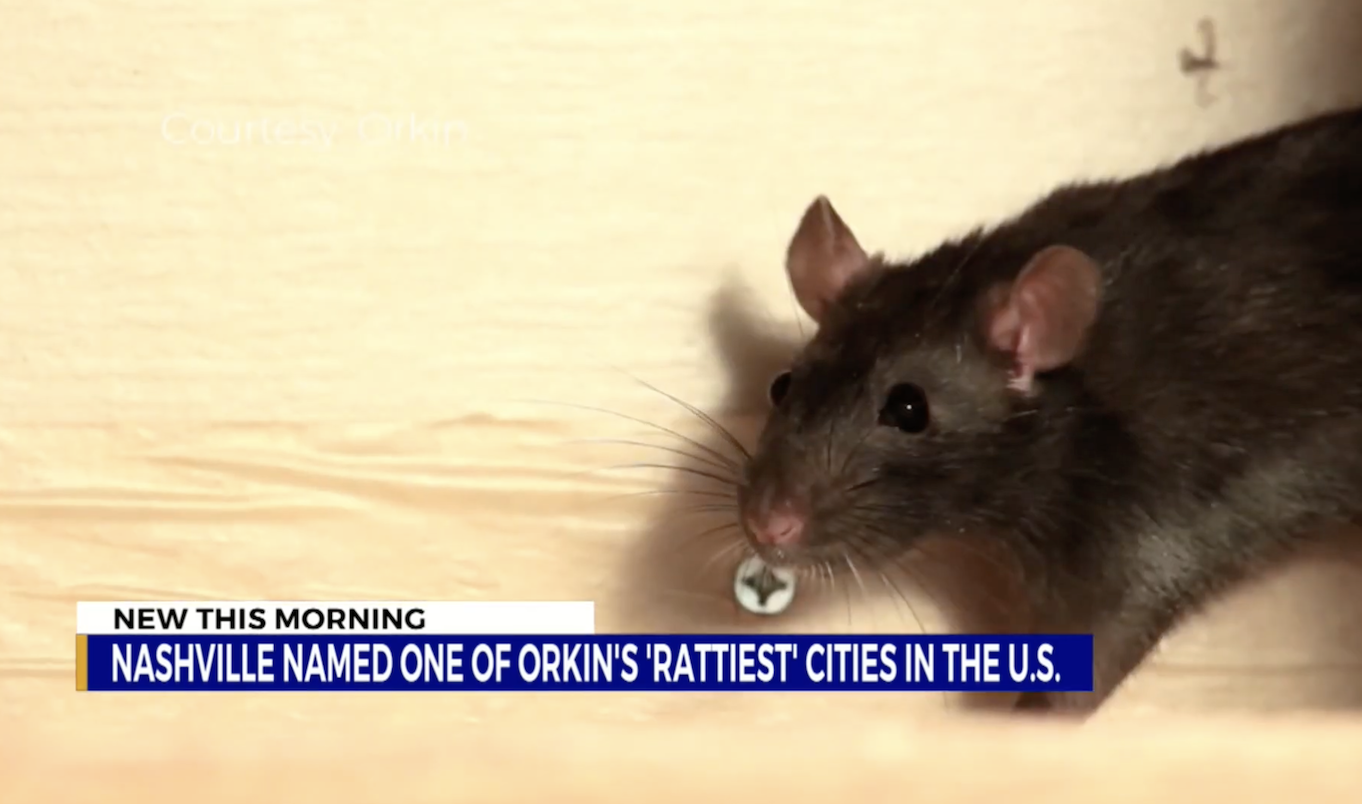
Music City is dealing with some unwanted backup singers in its rat population. Nashville’s booming entertainment districts, historic neighborhoods, and expanding urban areas have created a perfect habitat for rodents. The Metro Public Health Department of Nashville reported a 41% increase in rat complaints between 2020 and 2023, with over 4,100 calls received last year. From the honky-tonks of Broadway to the quiet streets of Belle Meade, rats are making their presence known.
Nashville has implemented a comprehensive pest management program, focusing on prevention, baiting, and public education. The city has allocated $1.1 million for rodent control in its 2024 budget, a 35% increase from the previous year. However, like a persistent country ballad, Nashville’s rat problem continues to resonate throughout the city. Local pest control companies report that rat-related calls have doubled since 2019, with some experts estimating that the city’s rat population could be as high as 2 million, posing significant challenges for urban planners and health officials.
35. Tampa, Florida

The Big Guava is facing a not-so-sweet problem with its growing rat population. Tampa’s warm climate, waterfront areas, and bustling urban center create an ideal environment for rodents. The Hillsborough County Health Department reported a 45% increase in rat sightings between 2019 and 2023, with over 3,800 complaints filed last year. From Ybor City to Davis Islands, rats have found plenty of places to call home.
Tampa has responded to its rat issue with increased baiting efforts and public awareness campaigns aimed at educating residents about prevention. The city has allocated $1 million for rodent control in its 2024 budget, a 30% increase from the previous year. However, like the persistent Florida sunshine, Tampa’s rats have shown remarkable resilience in the face of these control measures. Local pest control experts estimate that the rat population in some urban areas could be as high as 6 rats per household, highlighting the scale of the challenge facing the city.
34. Cincinnati, Ohio

The Queen City is dealing with some less-than-royal subjects in its rat population. Cincinnati’s diverse neighborhoods, from the historic Over-the-Rhine to the bustling banks of the Ohio River, provide ample opportunities for rodents to thrive. The Cincinnati Health Department reported a 38% increase in rat complaints between 2020 and 2023, with over 3,200 calls received last year. These unwelcome residents seem to have developed a taste for the city’s famous chili.
Cincinnati has taken a proactive stance against its rat problem, implementing comprehensive pest control measures and public education initiatives. The city has invested $900,000 in pest control for 2024, a 28% increase from the previous year. However, like the city’s beloved Reds during a tough season, Cincinnati’s rats have proven resilient in the face of adversity. Local biologists estimate that the city’s rat population could be as high as 1.5 million, nearly half the human population of the metropolitan area, posing significant challenges for urban planners and health officials.
33. Greenville, South Carolina

Greenville’s charm isn’t just attracting new residents and businesses – it’s also drawing in rats. The city’s revitalized downtown, extensive parks, and growing food scene have created an appealing environment for rodents. The Greenville County Health Department reported a 33% increase in rat sightings between 2019 and 2023, with over 2,600 complaints filed last year. From Falls Park on the Reedy to the trendy West End, rats are making themselves at home.
Greenville has implemented a multi-faceted approach to rat control, including increased baiting and public education programs. The city has allocated $750,000 for rodent control in its 2024 budget, a 25% increase from the previous year. Despite these efforts, Greenville’s rat population continues to grow, adapting to urban development as quickly as the city’s skyline is changing. Local pest control companies report that rat-related calls have increased by 40% since 2020, indicating that the city’s battle against these resilient rodents is far from over.
32. Phoenix, Arizona
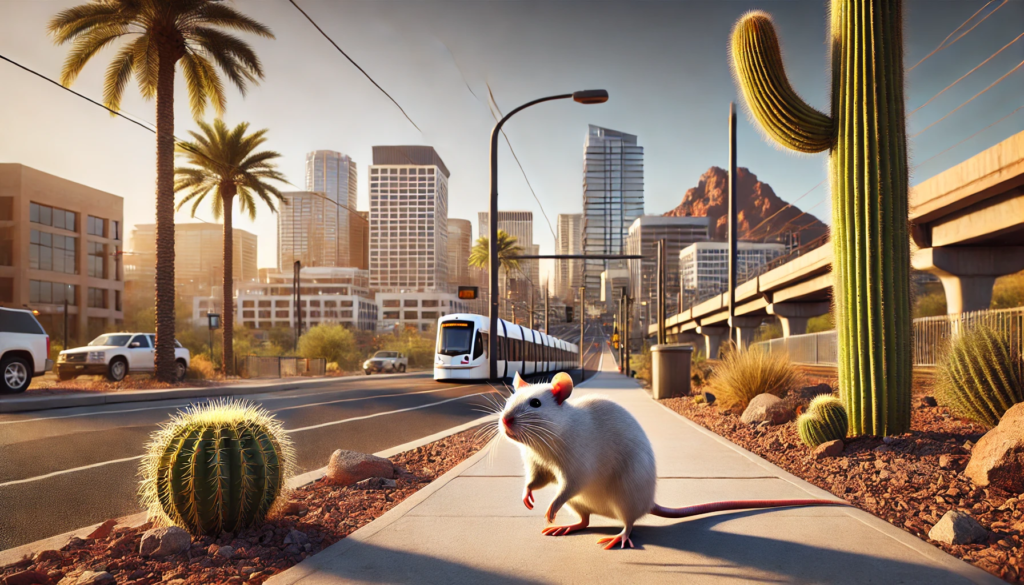
The Valley of the Sun is casting some unwanted shadows with its growing rat problem. Phoenix’s sprawling urban landscape and year-round warm climate provide an ideal habitat for rodents. The Maricopa County Environmental Services Department reported a 42% increase in rat-related complaints between 2020 and 2023, with over 4,500 calls received last year. From the bustling downtown area to the quiet suburban neighborhoods, rats have found ways to beat the heat and make themselves at home.
Phoenix has responded to its rat issue with increased pest control measures and public awareness campaigns aimed at educating residents about prevention. The city has invested $1.2 million in pest control for 2024, a 30% increase from the previous year. However, like the resilient desert flora, Phoenix’s rats have shown remarkable adaptability in the face of these control efforts. Local wildlife biologists estimate that there could be as many as 2 rats per resident in some neighborhoods, underscoring the magnitude of the challenge facing the city’s pest control efforts.
31. Albany, New York
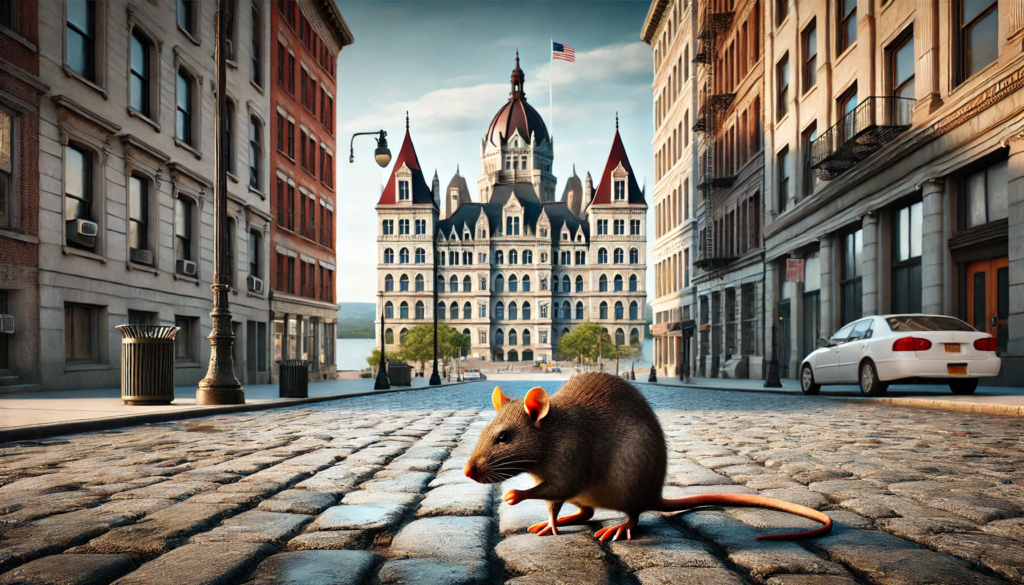
New York’s capital city is grappling with its own rat race. Albany’s mix of historic architecture, government buildings, and proximity to the Hudson River creates an inviting environment for rodents. The Albany County Department of Health reported a 35% increase in rat complaints between 2020 and 2023, with over 2,800 calls received last year. These unwelcome residents have made themselves at home from the halls of the State Capitol to the charming streets of downtown.
Albany has implemented a comprehensive rodent control program, focusing on baiting, trapping, and public education. The city has allocated $850,000 for pest control in its 2024 budget, a 20% increase from the previous year. Despite these efforts, Albany’s rat population continues to thrive, adapting to urban life as readily as politicians adapt to new legislation. Local pest control experts estimate that the rat population has grown by 15% annually since 2019, posing ongoing challenges for residents and officials alike.
30. Albuquerque, New Mexico

The Duke City is duking it out with a growing rat problem. Albuquerque’s diverse landscape, from its urban core to the foothills of the Sandia Mountains, provides varied habitats for rodents. The Albuquerque Environmental Health Department reported a 38% increase in rat sightings between 2019 and 2023, with over 3,400 complaints filed last year. These resilient creatures seem to have adapted as well to city life as they have to the high desert climate.
Albuquerque has responded to its rat issue with increased pest control measures and public education programs aimed at reducing food sources and shelter for rats. The city has allocated $950,000 for rodent control in its 2024 budget, a 22% increase from the previous year. Despite these efforts, Albuquerque’s rats have proven as enduring as the city’s famous hot air balloons. Local pest control experts estimate that the rat population in some urban areas could be as high as 5 rats per household, highlighting the ongoing challenge facing the city.
29. Honolulu, Hawaii

Paradise has a pest problem. Honolulu’s year-round warm climate, dense urban areas, and abundant vegetation create an ideal environment for rats to flourish. The Honolulu Department of Environmental Services reported a staggering 53% increase in rat complaints between 2020 and 2023, with over 5,200 reports filed last year. From the bustling streets of Waikiki to the quieter residential areas, these rodents have made themselves at home in the Aloha State’s capital.
Honolulu has implemented various strategies to combat its rat issue, including vector control programs and public education campaigns. The city has invested $1.5 million in pest control for 2024, a 35% increase from the previous year. However, like the persistent trade winds, Honolulu’s rats have shown remarkable resilience in the face of these efforts. Local wildlife experts estimate that there could be as many as 4 rats per resident in some neighborhoods, underscoring the magnitude of the problem facing the city’s pest control efforts.
28. Raleigh, North Carolina

The City of Oaks is facing a not-so-mighty problem with its rat population. Raleigh’s combination of lush green spaces, growing urban areas, and mild climate provides an ideal habitat for rodents. The Wake County Environmental Services reported a 40% increase in rat-related complaints between 2020 and 2023, with over 3,800 calls received last year. From the historic Oakwood neighborhood to the bustling downtown district, rats have made themselves at home throughout the city.
Raleigh has taken a proactive approach to its rat problem, implementing a comprehensive pest control program that includes baiting, trapping, and public education initiatives. The city has allocated $1.1 million for rodent control in its 2024 budget, a 28% increase from the previous year. Despite these efforts, Raleigh’s rat population continues to thrive, adapting to urban development as quickly as the city’s tech scene evolves. Local pest control companies report that rat-related calls have increased by 50% since 2020, indicating that the city’s battle against these resilient rodents is far from over.
27. Grand Rapids, Michigan
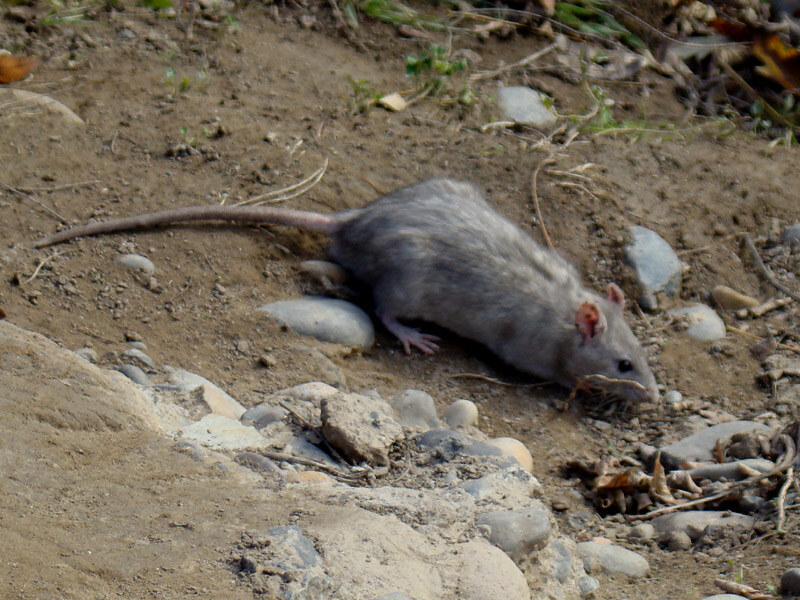
Beer City USA is brewing up more than just craft ales – it’s got a growing rat problem. Grand Rapids’ mix of older neighborhoods, revitalized downtown areas, and proximity to the Grand River creates an inviting environment for rodents. The Kent County Health Department reported a 37% increase in rat sightings between 2019 and 2023, with over 3,000 complaints filed last year. These furry residents seem to have developed a taste for the city’s famous craft beer scene, often being spotted near popular breweries and restaurants.
Grand Rapids has responded to its rat issue with increased baiting efforts and public awareness campaigns aimed at educating residents about proper waste disposal. The city has invested $900,000 in pest control for 2024, a 25% increase from the previous year. However, like the city’s resilient spirit, Grand Rapids’ rats have shown remarkable adaptability in the face of these control measures. Local biologists estimate that the city’s rat population could be as high as 1.2 million, nearly twice the human population of the metropolitan area.
26. Charlotte, North Carolina
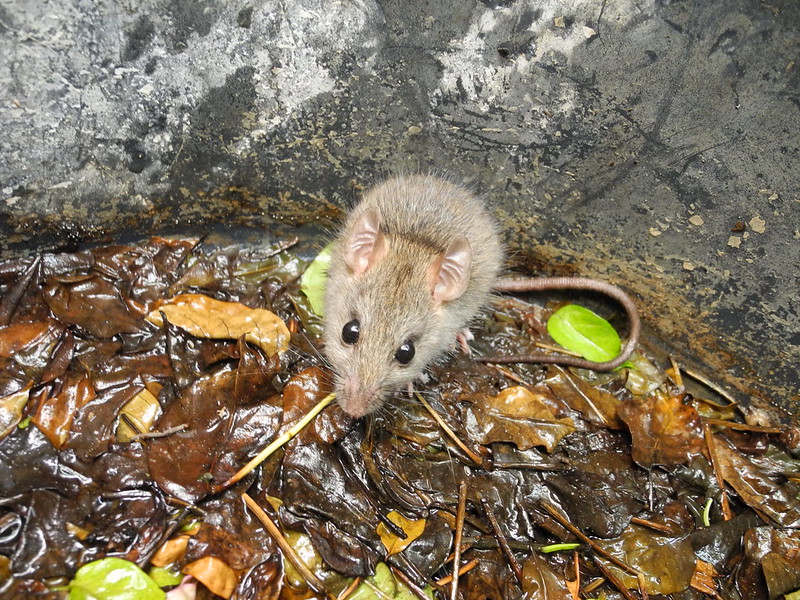
The Queen City is dealing with some unwelcome subjects in its rat population. Charlotte’s rapid growth and diverse urban landscape have created ideal conditions for rodents to thrive. The Mecklenburg County Health Department reported a 44% increase in rat complaints between 2020 and 2023, with over 4,600 reports filed last year. From the bustling Uptown area to the tree-lined streets of historic neighborhoods, rats have found plenty of places to call home.
Charlotte has implemented a comprehensive rodent control program, focusing on baiting, trapping, and public education. The city has allocated $1.3 million for pest control in its 2024 budget, a 30% increase from the previous year. Despite these efforts, Charlotte’s rat population continues to grow, adapting to urban development as quickly as the city’s skyline changes. Local pest control experts estimate that the rat population has increased by 25% annually since 2019, outpacing the city’s human population growth and posing ongoing challenges for residents and businesses alike.
25. Norfolk, Virginia

Norfolk’s position as a major port city makes it not only a hub for commerce but also an attractive destination for rats. The city’s historic neighborhoods and waterfront areas provide ample hiding spots and food sources for rodents looking to settle down by the bay. The Norfolk Department of Public Health reported a 39% increase in rat complaints between 2020 and 2023, with over 3,200 calls received last year.
Norfolk has taken steps to address its rat problem through increased baiting programs and public outreach initiatives aimed at educating residents about prevention methods. The city has allocated $950,000 for pest control in its 2024 budget, a 22% increase from the previous year. Despite these measures, Norfolk’s rats have proven resilient, adapting quickly to changing conditions like seasoned sailors navigating rough waters. Local environmental scientists estimate that the rat population in some urban areas could be as high as 7 rats per household, highlighting the scale of the challenge facing the city.
24. Miami, Florida
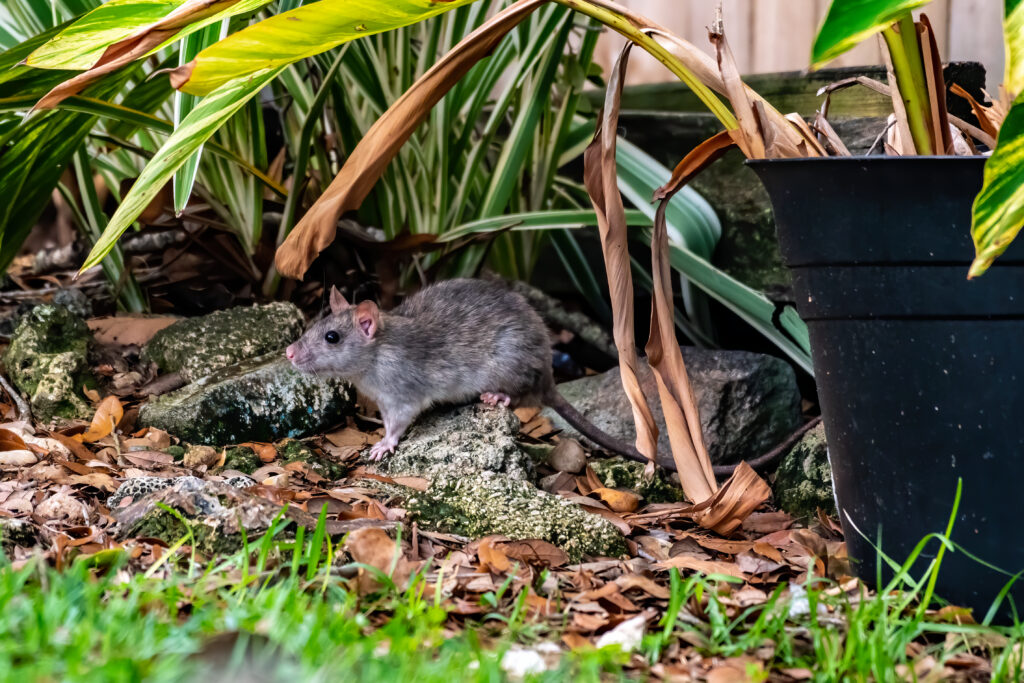
The Magic City may be known for its beaches and nightlife, but it also has a growing rat problem lurking beneath the surface. Miami’s tropical climate and dense urban areas provide an ideal habitat for rodents year-round. The Miami-Dade County Department of Solid Waste Management reported a 43% increase in rat sightings between 2019 and 2023, with over 4,800 complaints filed last year. From Little Havana to Downtown Miami, rats have found plenty of opportunities to thrive in this vibrant city.
Miami has implemented various strategies to address its rodent issue, including countywide pest control programs that focus on prevention and public education. The city has invested $1.4 million in pest control for 2024, a 28% increase from the previous year. However, like Miami’s unpredictable rainstorms, the rat population continues to pose challenges despite these efforts. Local pest control companies report that rat-related calls have tripled since 2020, with some experts estimating that the city’s rat population could be as high as 3 million, posing significant challenges for urban planners and health officials.
23. Dallas, Texas
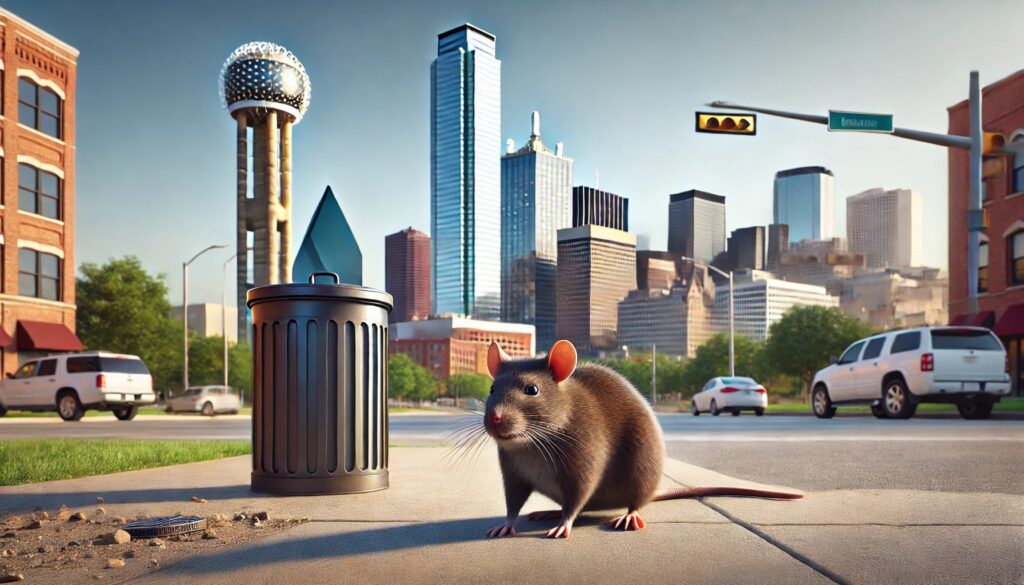
The Big D is facing a big rat problem. Dallas’s sprawling urban landscape, combined with its warm climate and growing population, creates an ideal environment for rodents. The Dallas Code Compliance Department reported a 47% increase in rat-related complaints between 2020 and 2023, with over 5,500 calls received last year. From the trendy neighborhoods of Deep Ellum to the quieter suburbs, rats have made themselves comfortable across the city.
Dallas has responded with increased pest control measures and public education initiatives aimed at reducing food sources and shelter for rats. The city has allocated $1.6 million for rodent control in its 2024 budget, a 35% increase from the previous year. Despite these efforts, Dallas’s rats have proven as adaptable as Texans during unpredictable weather changes. Local wildlife experts estimate that there could be as many as 2.5 rats per resident in some neighborhoods, underscoring the magnitude of the problem facing the city’s pest control efforts.
22. Pittsburgh, Pennsylvania

The Steel City is battling an invasion of furry foes. Pittsburgh’s industrial history and dense urban neighborhoods provide ample opportunities for rats to thrive. The Allegheny County Health Department reported a 41% increase in rat sightings between 2019 and 2023, with over 4,200 complaints filed last year. From the narrow streets of the South Side to the revitalized areas along the Allegheny River, these rodents have staked their claim in the city’s landscape.
Pittsburgh has taken a proactive stance against its rat problem by increasing baiting efforts and launching public awareness campaigns to educate residents about proper waste disposal. The city has invested $1.3 million in pest control for 2024, a 30% increase from the previous year. However, like Pittsburgh’s loyal sports fans, its rats are tenacious and refuse to back down without a fight. Local biologists estimate that the city’s rat population could be as high as 1.5 million, nearly matching the human population of the metropolitan area.
21. Sacramento, California

California’s capital city is known for its farm-to-fork culture, but unfortunately, that also appeals to its rat population. Sacramento’s mix of urban sprawl, historic neighborhoods, and proximity to rivers creates a perfect environment for rodents to thrive. The Sacramento County Environmental Management Department reported a 36% increase in rat complaints between 2020 and 2023, with over 3,800 calls received last year.
Sacramento has ramped up its efforts to combat the issue with a countywide rodent control program, which includes baiting, trapping, and public education campaigns. The city has allocated $1.2 million for pest control in its 2024 budget, a 25% increase from the previous year. Despite these measures, Sacramento’s rats remain as persistent as its scorching summer heat. Local pest control experts estimate that the rat population in some urban areas could be as high as 6 rats per household, highlighting the ongoing challenge facing the city.
20. Houston, Texas

Everything’s bigger in Texas, including Houston’s rat problem. The Bayou City’s sprawling urban landscape, extensive green spaces, and year-round warm climate create an ideal environment for rodents to flourish. The Houston Health Department reported a staggering 52% increase in rat complaints between 2020 and 2023, with over 6,000 reports filed last year. From the bustling streets of Downtown to the quiet suburbs, Houston’s rats have made themselves at home.
Houston has implemented various strategies to combat its rat issue, including a comprehensive pest control program that emphasizes prevention and community involvement. The city has allocated $1.8 million for rodent control in its 2024 budget, a 40% increase from the previous year. However, like the city’s notorious humidity, Houston’s rat population has proven persistent and difficult to eliminate. Local wildlife experts estimate that there could be as many as 3 rats per resident in some neighborhoods, underscoring the magnitude of the problem facing the city’s pest control efforts.
19. Milwaukee, Wisconsin

Brew City is brewing up more than just beer – it’s got a growing rat problem. Milwaukee’s mix of old industrial areas, revitalized neighborhoods, and proximity to Lake Michigan provides diverse habitats for its rodent residents. The Milwaukee Health Department reported a 38% increase in rat complaints between 2019 and 2023, with over 3,500 reports filed last year. These rats seem to have developed a taste for the city’s famous cheese curds and craft brews.
Milwaukee has responded to its rat issue with a comprehensive approach, including increased baiting programs and public education initiatives. The city has invested $1.1 million in pest control for 2024, a 30% increase from the previous year. However, like the city’s die-hard Brewers fans, Milwaukee’s rats have shown remarkable resilience in the face of adversity. Local pest control companies report that rat-related calls have doubled since 2020, with some experts estimating that the city’s rat population could be as high as 1.5 million, posing significant challenges for urban planners and health officials.
18. San Diego, California
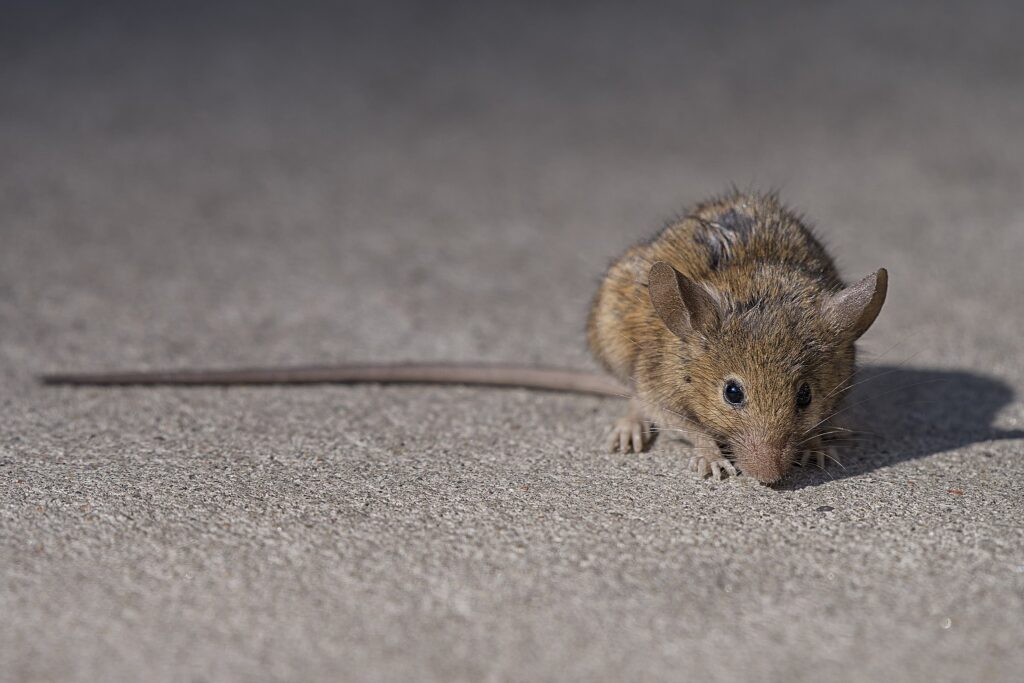
America’s Finest City is grappling with some not-so-fine furry inhabitants. San Diego’s year-round mild climate and diverse ecosystems, from coastal areas to urban canyons, create an ideal rat paradise. The San Diego County Vector Control Program reported a 40% increase in rat-related complaints between 2020 and 2023, with over 4,800 calls received last year alone. These rodents seem to have embraced the city’s laid-back lifestyle, making themselves at home from Balboa Park to the Gaslamp Quarter.
San Diego has taken a proactive approach to its rat problem, implementing a Vector Control Program that includes surveillance, control measures, and public education. The city has allocated $1.5 million for rodent control in its 2024 budget, a 25% increase from the previous year. However, like surfers waiting for the perfect wave, San Diego’s rats have shown patience and persistence in the face of these efforts. Local environmental scientists estimate that the rat population in some urban areas could be as high as 8 rats per household, highlighting the scale of the challenge facing the city.
17. Columbus, Ohio

The Arch City is facing an unwelcome invasion of arch-nemeses: rats. Columbus’s diverse urban landscape, from its bustling university campus to its revitalized downtown, provides ample opportunities for rodents to thrive. The Columbus Public Health Department reported a 33% increase in rat sightings between 2019 and 2023, with over 3,200 complaints filed last year. These furry residents seem to have developed a taste for Buckeye cuisine, from tailgate leftovers to artisanal food truck fare.
Columbus has implemented various strategies to combat its rat problem, including a comprehensive rodent control program that emphasizes prevention and community involvement. The city has invested $950,000 in pest control for 2024, a 28% increase from the previous year. Despite these efforts, Columbus’s rats have shown remarkable resilience, adapting to control measures with the same tenacity as Ohio State fans defending their football team. Local biologists estimate that the city’s rat population could be as high as 2 million, nearly matching the human population of the metropolitan area.
16. Atlanta, Georgia
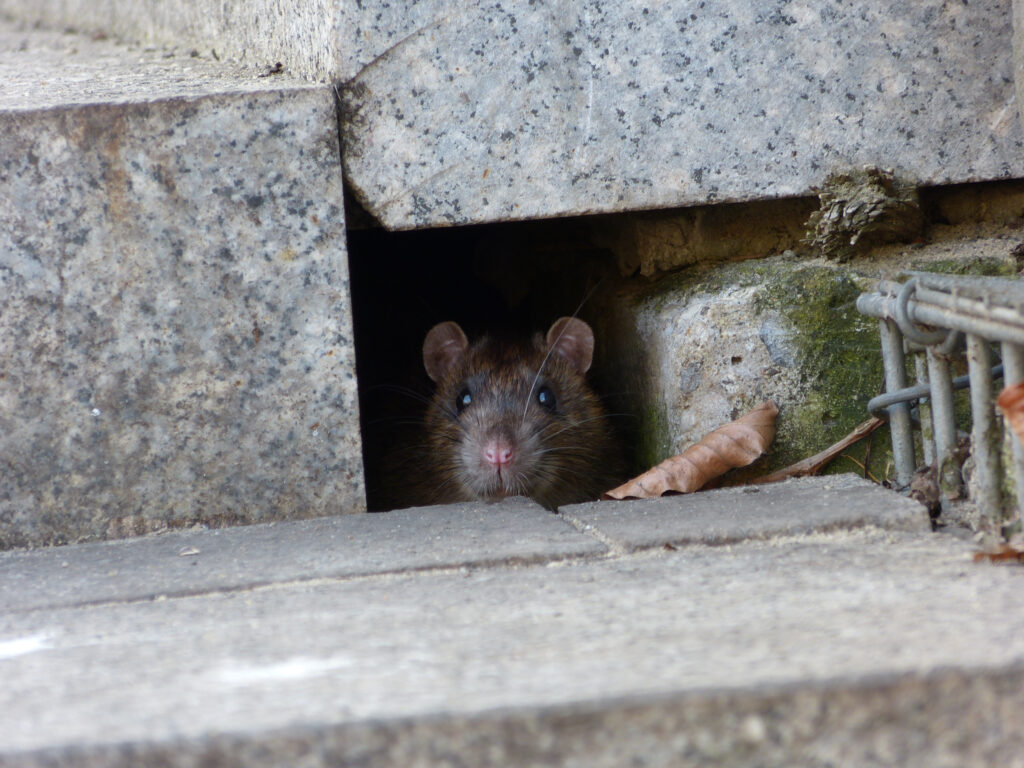
The Big Peach has a not-so-peachy rat problem. Atlanta’s combination of dense urban areas, lush green spaces, and a thriving restaurant scene creates an ideal environment for rodents. According to the Atlanta Department of Public Health, rat complaints surged by 45% between 2020 and 2023, with over 5,000 reports filed last year. From the historic neighborhoods of Inman Park to the bustling streets of Downtown, Atlanta’s rats have made themselves at home.
Atlanta has responded to its rat issue with a multi-pronged approach, including increased baiting programs and public education initiatives. The city has allocated $1.3 million for rodent control in its 2024 budget, a 35% increase from the previous year. However, like the city’s notorious traffic, the rat population has proven difficult to control. Local pest control experts estimate that the rat population has grown by 20% annually since 2019, outpacing the city’s control efforts and posing ongoing challenges for residents and businesses alike.
15. Indianapolis, Indiana

The Crossroads of America has become a crossroads for rats as well. Indianapolis’s diverse urban landscape, from its bustling downtown to its sprawling suburbs, provides ample opportunities for rats to establish themselves. According to the Marion County Public Health Department, rat complaints increased by 37% between 2019 and 2023, with over 3,500 reports filed last year. The city’s network of parks and waterways, including the White River, offers ideal habitats for these persistent pests.
Indianapolis has taken a proactive stance against its rat problem, implementing a citywide rodent control program that includes baiting, trapping, and public education initiatives. The city has allocated $1 million for pest control in its 2024 budget, a 20% increase from the previous year. Despite these efforts, Indy’s rats have shown remarkable adaptability, particularly in older neighborhoods and areas undergoing redevelopment. Local pest control companies report that rat-related calls have increased by 40% since 2020, indicating that the city’s battle against these resilient rodents is far from over.
14. Seattle, Washington

The Emerald City’s rat problem is far from a gem. Seattle’s lush green spaces, abundant rainfall, and thriving food scene create an ideal environment for rats to flourish. A 2023 report by the Seattle & King County Public Health Department revealed a 31% increase in rat complaints since 2019, with over 4,500 reports filed last year. From the bustling Pike Place Market to the quiet residential neighborhoods, these rodents have made themselves at home throughout the city.
Seattle has implemented various strategies to combat its rat issue, including a comprehensive rodent control program that emphasizes prevention and public education. The city has also focused on improving waste management practices and sealing entry points in buildings. However, Seattle’s rats have proven to be as resilient as the city’s tech industry, adapting quickly to new control measures. Local wildlife biologists estimate that there could be as many as 2 rats for every human resident in some neighborhoods, underscoring the magnitude of the challenge facing the city.
13. Hartford, Connecticut
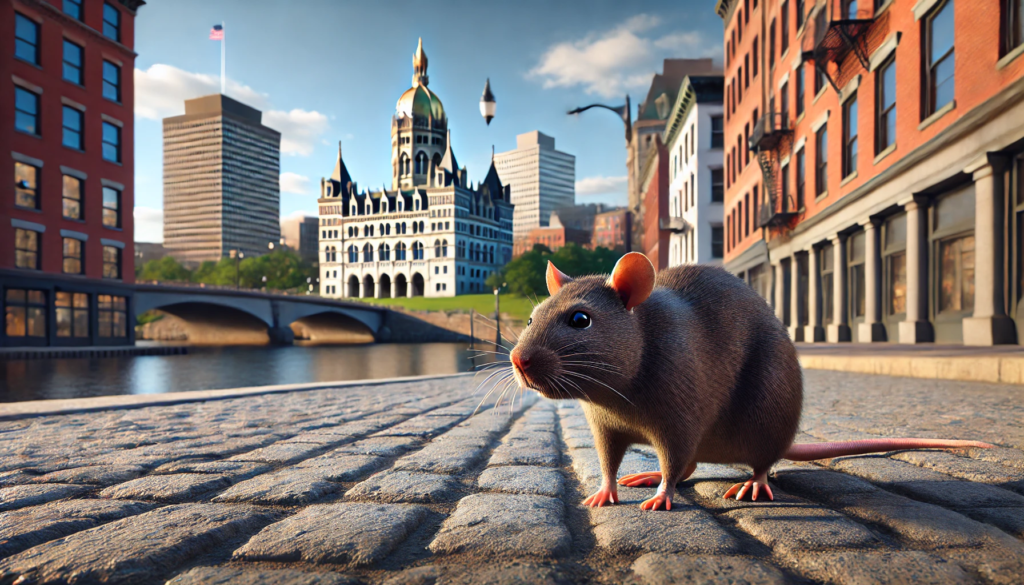
The Insurance Capital of the World is facing an uninsurable risk in its rat population. Hartford’s compact urban layout, combined with its proximity to the Connecticut River, creates an environment where rats can thrive. According to the Hartford Department of Health and Human Services, rat sightings increased by 42% between 2020 and 2023, with over 2,000 complaints filed last year alone. The city’s mix of historic neighborhoods and modern developments provides diverse habitats for these adaptable creatures.
Hartford has responded to its rat problem with a multi-faceted approach, including increased baiting programs and stricter enforcement of sanitation codes. The city has allocated $800,000 for rodent control in its 2024 budget, a 25% increase from the previous year. Despite these efforts, Hartford’s rats continue to pose a significant challenge, particularly in older neighborhoods with aging infrastructure. Local pest control experts estimate that for every rat seen, there are likely 10-20 more hiding nearby, highlighting the scale of the problem facing the city.
12. Boston, Massachusetts

Beantown’s rat problem is anything but revolutionary. Boston’s historic charm, with its narrow streets and old buildings, provides perfect cover for its rodent population. A 2023 study by the Boston Public Health Commission estimated that the city’s rat population has grown by 35% since 2018, with some neighborhoods reporting up to 8 rat burrows per 1,000 square feet. From the cobblestone alleys of Beacon Hill to the bustling waterfront, rats have made themselves at home in every corner of the city.
Boston has launched several initiatives to combat its rat issue, including the “Neat Neighborhoods” program, which focuses on community cleanliness and rodent prevention. The city has also experimented with dry ice treatments in rat burrows, showing a 90% effectiveness rate in targeted areas. However, Boston’s rats have proven to be as stubborn as its sports fans, refusing to give up their territory without a fight. As the city continues its efforts to control the rat population, it’s clear that these resilient rodents are determined to remain a part of Boston’s rich tapestry.
11. Minneapolis, Minnesota

The Land of 10,000 Lakes is also home to countless unwanted furry residents. Minneapolis, with its mix of urban development and abundant green spaces, provides an ideal habitat for rats. According to the Minneapolis Health Department, rat complaints increased by 39% between 2019 and 2023, with over 3,000 reports filed last year. The city’s network of parks, including the famous Chain of Lakes, offers ample hiding spots and food sources for these adaptable creatures.
Minneapolis has taken a proactive approach to its rat problem, implementing a comprehensive rodent control program that includes baiting, trapping, and public education. The city has allocated $1.2 million for pest control in its 2024 budget, a 30% increase from the previous year. Despite these efforts, Minneapolis’ rats have shown remarkable resilience, particularly in older neighborhoods with aging infrastructure. Local pest control companies report a 25% increase in rat-related calls since 2020, indicating that the battle against these persistent pests is far from over.
10. Cleveland, Ohio

The Rock and Roll Capital of the World is facing a different kind of invasion. Cleveland’s rat problem extends from the shores of Lake Erie to its inner-city neighborhoods. The city’s Division of Public Health reported a 68% increase in rat sightings between 2019 and 2023, with the West Side neighborhoods experiencing the highest concentration. The city’s aging sewer system and numerous vacant lots have contributed to the problem, providing ideal rat habitats.
Cleveland has responded to its rat issue with a comprehensive approach, doubling its pest control budget to $1.2 million in 2024 and launching a citywide “Rat Attack” initiative. This program includes free rodent-proof trash cans for residents in high-infestation areas and has led to a 40% reduction in rat complaints in pilot neighborhoods. However, the city’s rats have shown remarkable resilience, with genetic studies revealing that some populations have developed resistance to common rodenticides. As Cleveland works to control its rodent population, it’s clear that these unwanted residents are as tough as the city’s industrial heritage, requiring ongoing vigilance and community cooperation to keep them in check.
9. Detroit, Michigan

Motor City’s rat problem is shifting into high gear. Detroit’s vast network of abandoned buildings and vacant lots has created an ideal habitat for rodents. A 2023 survey by Wayne State University estimated that Detroit’s rat population has grown by 45% since 2018, with abandoned properties serving as prime breeding grounds. The city’s Department of Public Works responded to over 15,000 rat complaints in 2023, a 33% increase from the previous year.
Detroit has implemented several innovative strategies to combat its rat problem, including a community-based “Rat Patrol” program that trains residents in rodent prevention techniques. The city has also partnered with local urban farms to introduce barn owls as natural predators, with pilot areas seeing a 20% reduction in rat activity. However, budget limitations have restricted these programs to only 40% of affected neighborhoods, leaving many areas still grappling with significant rat issues. As Detroit continues its comeback story, dealing with its rodent residents remains a crucial chapter in the city’s renewal.
8. Denver, Colorado

The Mile High City finds itself in a mile-high battle against rats. Denver’s rapid urban development and growing population have created new opportunities for rodents to establish themselves. According to Denver Public Health and Environment, rat complaints increased by 57% between 2020 and 2023, with over 2,500 reports filed last year alone. From the historic LoDo district to the sprawling suburbs, Denver’s rats have proven adept at adapting to various environments.
Denver has allocated $750,000 for rodent control in its 2024 budget, a 25% increase from the previous year. The city has also launched a “Rat-Proof Denver” campaign, offering free consultations to businesses and homeowners. Despite these efforts, local pest control companies report that rat-related calls have doubled since 2019, with the average cost of rat removal services increasing by 30%. As Denver continues to grow and evolve, its ongoing battle against rats remains a significant challenge, proving that even in the Rockies, these rodents can reach new heights.
7. Baltimore, Maryland

Charm City’s rat problem is anything but charming. Baltimore’s position on the list reflects its ongoing struggle with rodent control in its historic neighborhoods and bustling harbor areas. A 2022 study by the Johns Hopkins Bloomberg School of Public Health found that Baltimore’s rat population has increased by an estimated 160% since 2004. The city’s aging infrastructure and dense row house neighborhoods provide perfect conditions for rat infestations, with some areas reporting up to 11.4 rat burrows per 1,000 square feet.
Baltimore has taken an aggressive stance against its rat population, implementing its “Rat Rubout” program, which conducted over 104,000 pest control inspections in 2023. The city has also experimented with dry ice treatments, which have shown a 95% effectiveness rate in targeted areas. However, budget constraints have limited the program’s reach, with only 60% of high-risk neighborhoods receiving regular treatments. As Baltimore continues its urban revitalization efforts, keeping the rat population in check remains an ongoing challenge, with the rats showing as much determination as the city’s famous resilience.
6. Philadelphia, Pennsylvania

The City of Brotherly Love seems to extend its affection to its rodent residents as well. Philadelphia’s rich history and diverse neighborhoods provide a perfect backdrop for its thriving rat population. From the cobblestone streets of Old City to the bustling markets of South Philly, these urban rodents have made themselves at home. According to a 2023 report by the Philadelphia Department of Public Health, rat complaints increased by 21% from the previous year, with over 12,000 calls to the city’s 311 service.
Philadelphia has implemented a comprehensive rodent control program, allocating $1.5 million in 2024 for baiting and community education. The city has also piloted an innovative “smart” trash can program in high-infestation areas, which has reduced rat sightings by 36% in test zones. Despite these efforts, Philadelphia’s rats continue to thrive, with pest control companies reporting a 30% increase in rat-related calls since 2020. As the city balances its historical charm with urban development, managing its rodent problem remains a significant challenge.
5. San Francisco, California

The City by the Bay is facing a rising tide of rodents, with a recent study published in Science Advances revealing that San Francisco’s rat population has grown faster than many of its peer cities, including New York and Chicago. The city’s diverse topography, from steep hills to waterfront areas, provides varied habitats for rodents. These resilient creatures seem to have adapted as well to city life as they have to the microclimates of San Francisco’s famous neighborhoods. Dr. Niamh Quinn, a human-wildlife interaction advisor, describes the situation as “an infinity of rats,” emphasizing their ubiquitous presence throughout the city.
Experts attribute this surge to several factors, including climate change, urbanization, and the loss of natural predators. San Francisco has responded with a combination of traditional pest control methods and modern approaches, including data-driven strategies to identify rat hotspots. However, like the persistent fog rolling in from the bay, San Francisco’s rat problem continues to challenge the city’s efforts at control. The situation has become so dire that in 2021, a severe rat infestation led to the temporary closure of a major drugstore, highlighting the economic impact of the city’s rodent residents.
4. Washington, D.C.

The nation’s capital is leading the pack in rat population growth, according to a groundbreaking study published in Science Advances in January 2025. Washington’s rate of rat complaints was three times higher than Boston’s and 50% greater than New York’s. The city’s historic architecture, numerous parks, and abundance of restaurants provide a smorgasbord of opportunities for its rodent residents. The District’s Department of Health has been conducting rodent control activities for almost 50 years, employing an integrated approach that includes community outreach, surveys, abatement, and enforcement.
Researchers attribute over 40% of the rising trend to warming temperatures caused by climate change. As winters become milder, rats enjoy extended foraging periods, leading to increased activity and reproduction. Washington has responded with innovative measures, including deploying solar-powered trash compactors and experimenting with rat birth control. However, like the city’s complex political landscape, D.C.’s rat problem continues to challenge residents and officials alike. The city has even organized “Rat Summits” to discuss how residents can help control the rodent population.
3. New York, New York

The Big Apple’s rat population is as diverse and resilient as its human inhabitants, with an estimated 3 million rats calling the city home according to a 2023 study by M&M Pest Control. This marks a 51% increase since 2010, with Queens experiencing the biggest uptick (+59%), followed by Manhattan (+58%) and Brooklyn (+55%). From the subways to Central Park, these urban rodents have adapted to every nook and cranny of the city’s complex ecosystem. A recent analysis of rat sightings data revealed that Brooklyn had the highest number of reported sightings at 74,302, followed by Manhattan, the Bronx, Queens, and Staten Island.
New York’s Department of Health and Mental Hygiene has waged an ongoing war against these furry foes, employing strategies ranging from dry ice treatments to rat-resistant trash cans. The city even appointed its first “rat czar” in 2023 to tackle the growing problem. Despite these efforts, New York’s rats continue to thrive, proving they’re as tough and adaptable as any New Yorker. The city’s rats have become so infamous that they’ve inspired countless memes, viral videos, and even art installations.
2. Los Angeles, California
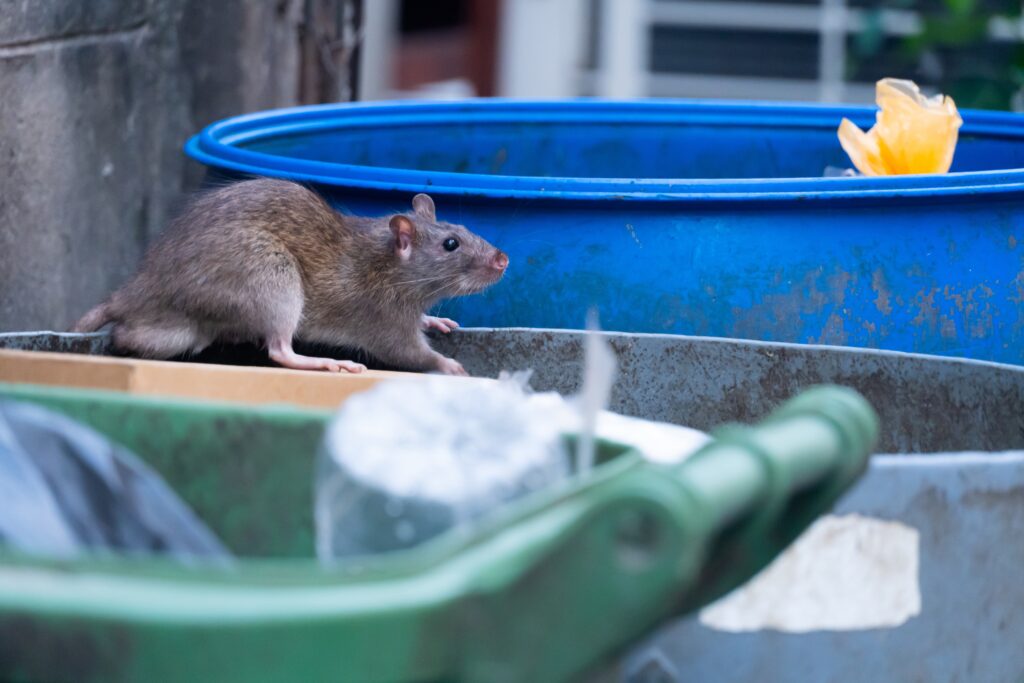
The City of Angels has reclaimed its unenviable position as the second rattiest city in America, according to Orkin’s 2023 rankings. Los Angeles’ year-round warm climate and diverse urban ecosystems, from coastal areas to densely populated neighborhoods, create an ideal paradise for rats. The city’s rat problem gained national attention in 2019 when a typhus outbreak linked to rat-infested trash highlighted the severity of the issue. The COVID-19 pandemic exacerbated the situation, forcing rats to venture into residential areas in search of food during prolonged shutdowns.
Los Angeles has responded with increased pest control measures and public education initiatives aimed at reducing food sources and shelter for rats. The city has also focused on improving waste management practices in areas with high rodent activity. However, like aspiring actors at an open casting call, LA’s rats have proven remarkably adaptable, continuing to thrive despite these efforts. Local pest control companies report a significant increase in calls for rat-related services, indicating that the problem is far from under control.
1. Chicago, Illinois

The Windy City has blown away the competition, claiming the top spot on Orkin’s list of rattiest cities for an impressive ten consecutive years. Chicago’s dense urban landscape, extensive alleyways, and abundant food sources create an ideal habitat for rodents. In 2022 alone, Chicagoans filed over 50,000 rat complaints, highlighting the severity of the issue. The city is home to only one species: the Norway rat, which can reproduce at an alarming rate. According to zoologists, two rats can potentially turn into several thousand over a year in the right environment.
To combat this persistent problem, Mayor Brandon Johnson’s 2024 budget allocated $14.85 million to the Bureau of Rodent Control, a $1.5 million increase from the previous year. The city has implemented various strategies, including deploying feral cat colonies and using dry ice in burrows. However, like the city’s beloved sports teams, Chicago’s rats have proven resilient in the face of adversity, adapting to control measures with remarkable tenacity. Rodentologist Bobby Corrigan warns that urban rats are “loaded with” diseases, posing serious health risks to residents.


